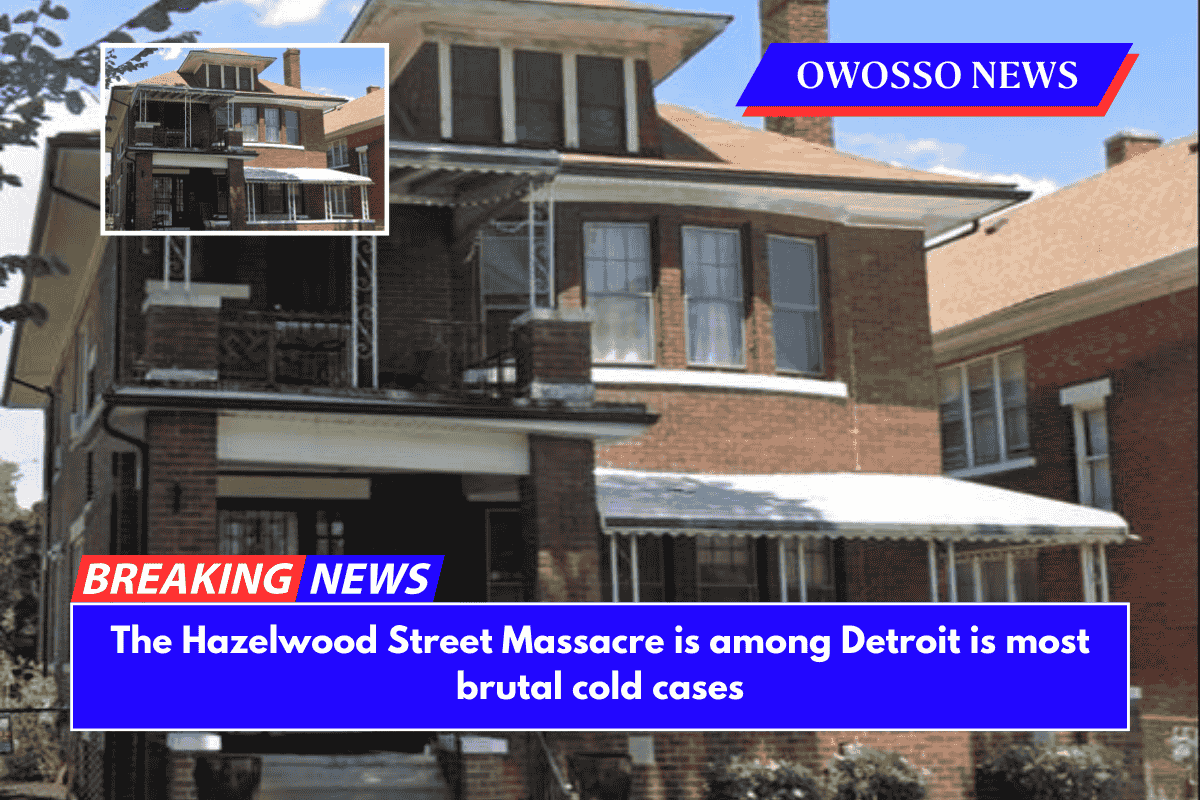DETROIT, MI — The house on Hazelwood Street should have been quiet after the gunshots stopped. However, what investigators discovered inside sounded louder than any siren that night.
On June 14, 1971, shortly before dawn, Detroit Police responded to reports of gunfire at a three-story brick home at 1970 Hazelwood on the city’s west side. One call came from a neighbor, and another from a woman who had driven her husband to Henry Ford Hospital after he had been shot at home. That man’s name was Robert Gardner, which was already familiar to many in Detroit.
According to Detroit Police, Gardner was a well-known heroin dealer and pimp who had made enemies throughout the city and possibly beyond. Officers discovered seven bodies when they entered the Hazelwood home.
Inside the living room, there was execution-style carnage. Two men had fallen headlong into the fireplace. Another person slumped against the couch. Three women lay on the floor. A fourth was nearby. Each had been shot in the head from close range with.30,.32, and.45 caliber weapons.
The victims are identified as:
Katherine Louise Winston, 19
Tessie Brown, 18
Katherine Betty Basser, 21
Sharon Brown, 19
Romandel Burton, 23
Carl Carrington Mounts Jr., 26
Lloyd Kenneth Tyler, 27
Gardner had been shot in his mouth, chest, and stomach. He died six days later.
According to police, three people escaped the house by jumping out a window and then came to the station on their own. Inside the house, detectives discovered several handguns, a shotgun, drug paraphernalia, and heroin. However, the heroin was not real. It wasn’t real. And that’s where the story takes a darker turn.
Investigators followed the leads and discovered that Gardner had been robbing other drug dealers by passing off fake heroin as the real thing. The news spread quickly, and they speculated that the massacre was a hit on Gardner. Anyone else? Killed simply for being present.
Witnesses told police that four men fled the house immediately after the gunfire. Within days, the theory became clear: this was retaliation, and it was brutal.
Just four days later, Gerald Williams, another local heroin dealer and Gardner associate, was shot six times at a Detroit motel, adding to the body count. According to the Detroit Police Department, Gerald was once the connection for dealers in Toronto but has since been replaced by Gardner.
Gerald was allegedly still connected to the Toronto dealers who had been duped by Gardner’s counterfeit product. Gerald was believed to have set up Gardner, and someone wanted to keep him quiet.
Detectives traveled to Upper Darby, Pennsylvania, where they interviewed Shirley Edge, 25, and Lynn Weber, 23. The women claimed they were with Gardner in New York City on June 11 when he received a phone call summoning him back to Detroit for what was supposed to be a lucrative contract. That call might have been a trap.
According to police reports, there has already been talk in New York about putting a price on Gardner’s head. The mistake, it appeared, was not simply selling fake heroin, but also robbing dealers while allowing them to live and possibly reveal the truth.
By the end of that summer day in 1971, eight people had been murdered in one of Detroit’s most heinous crimes. Despite numerous leads, theories, and names, no arrests have been made.
The Hazelwood Massacre is one of Detroit’s largest unsolved mass murders, with a case that has gone cold for over five decades but has never been closed.
If you have any information, call Detroit Crime Stoppers at 800-773-2587.
















